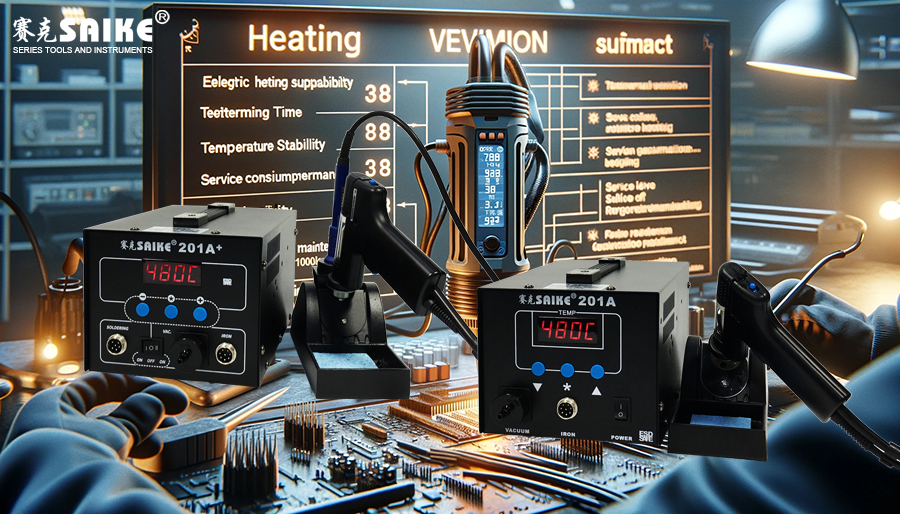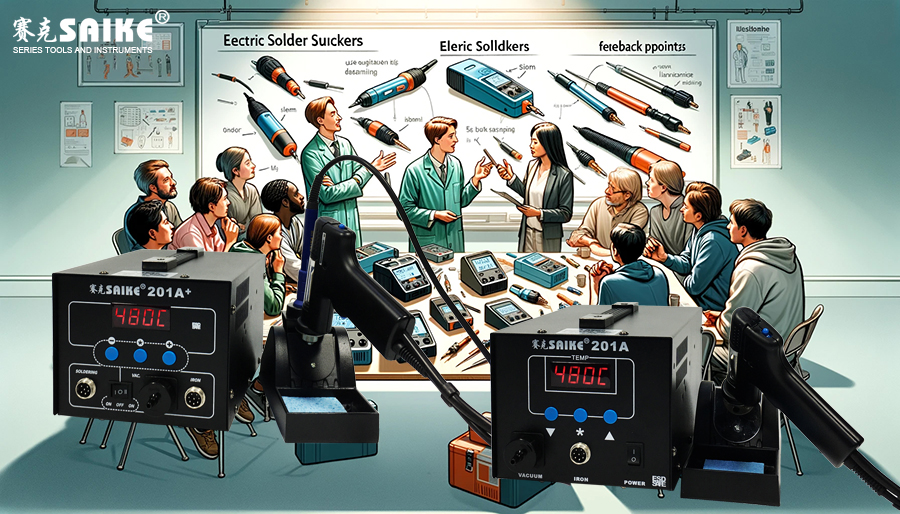
SK-YJ000DDXXQ-KP 100019
The electric solder sucker is an indispensable tool in the electronic manufacturing and maintenance industry, and its performance directly affects the efficiency and quality of soldering work. Understanding and evaluating the performance indicators and key parameters of the electric solder sucker is the foundation for selecting and using this tool. Here are the main performance evaluation indicators and key parameters of the electric solder sucker.
I. Main Performance Evaluation Indicators
1.Heating Time
– Heating time refers to the time required for the solder sucker to reach the set operating temperature from startup. The shorter the heating time, the faster the tool’s response speed and the stronger its ability to adapt to a fast-paced work environment.
2.Temperature Stability
– Whether the solder sucker can maintain a stable operating temperature during continuous use. A solder sucker with small temperature fluctuations can provide a more reliable soldering effect and reduce thermal damage to the circuit board.
3.Solder Sucking Capability
– It is manifested as the speed and amount of solder sucked. The key is to quickly and thoroughly remove the solder from the soldering joints. Efficient solder sucking capability can significantly improve work efficiency.
4.Energy Consumption Efficiency
– Consider the energy consumption of the solder sucker during task execution. Energy-efficient equipment not only reduces operating costs but also contributes to environmental protection.
5.Service Life and Reliability
– Refers to the durability and failure rate of the solder sucker under normal use conditions. A highly reliable solder sucker can reduce maintenance frequency and costs.
6.Convenience of Maintenance
– Includes the ease of cleaning the solder sucker, replacing the suction nozzle, and repairing internal components. A user-friendly design can enhance the overall user experience of the equipment.
II. Key Technical Parameters
1.Maximum Heating Temperature
– The highest operating temperature that the solder sucker can reach, which affects the type of solder that can be processed. Different solders have different melting points, which need to be considered when selecting.
2.Temperature Adjustment Range
– A solder sucker with a wide adjustable temperature range is more suitable for a variety of soldering materials and complex work environments.
3.Suction Force of the Solder Sucker Pump
– The suction force directly determines the effect of solder sucking, especially when dealing with a large amount of solder or large soldering joints.
4.Noise Level
– The noise level generated during operation. Low-noise design is essential to maintain the comfort of the work environment.
5.Weight and Ergonomic Design
– Whether the weight and design of the equipment are convenient for long-term operation has a direct impact on the operator’s fatigue level.
III. Summary
The performance evaluation indicators and key parameters of the electric solder sucker are the basis for selecting and evaluating this tool. A suitable solder sucker can not only improve production efficiency but also ensure the quality and safety of soldering work. When purchasing or evaluating a solder sucker, the above indicators and parameters should be comprehensively considered to choose the most suitable product for one’s needs. Understanding these performance indicators can help users better operate and maintain the equipment, extend its service life, and maintain good work results.


